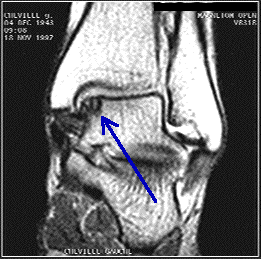Toenail Fungus

Nail Fungus: A fungus is an organism that lives in warm moist areas. Fungus of the toenails is a common problem that can affect people of all ages, although it most commonly affects individuals who are older.
Toenail fungus often begins as an infection in the skin called tinea pedis (also known as athlete’s foot). The fungus often starts under the nail fold at the end of the nail. Over time it grows underneath the nail and causes changes to its appearance, such as a yellow or brownish discoloration. It can also cause thickening and deformity of the toenail.
Many people have difficulty with their toenails and need assistance in caring for them. A foot and ankle surgeon can diagnose the cause of toenail problems and recommend treatments.
Treatment Options:
The most common treatment for nail fungus is debridement or nail trimming. This helps to prevent or monitor degeneration of the nail and decrease the onset of secondary infection under the nail plate due to the deformity and debris. Sometimes the fungal infection has been left uncontrolled and has permanently damaged the cells that produce the nail plate called the matrix. When this happens, neither topical nor oral medications will work, and debridement is the only treatment option.
Topical antifungals need to be applied around the cuticles and skin. Before the application, clean under your nails with a toothbrush to loosen as much debris as possible. Gently clean with Peroxide first if very thick and debris filled, then mild soap and water. There are 2 FDA approved topical medications; additionally, we have an affordable option, Formula 3, if the prescription is too expensive or not covered by insurance.
Oral antifungal treatments benefit from a daily clean routine. The most common medication is Lamisil. It is taken for 3 months once daily. Patient must have a healthy liver as demonstrated on the liver function blood test in the last 3 months. This test will be repeated after the first two doses are complete and before the third dose. No other drugs that are processed through the liver can be taken for the treatment time of 4 months, to list a few examples: Alcohol, Statins, Acetaminophen, Ibuprofen, Naproxen, Sleeping pills, Tranquilizers, Cholesterol Lowering Medications, some Supplements and Herbs.
Nail Care:
Discontinue harsh nail products; switch to gentle or children’s nail polish. We have several options in the Office to choose from by LVX. Non-acetone nail polish removers should only be used, because they may dry the nails and surrounding tissue.
A daily supplement with Biotin, which you can purchase from the pharmacy separately or in a multi-vitamin, strengthens the nail once healed. Allow nine months to see results, because nails grow approximately 1 mm per month.
Like your skin, nails can get overly dry or “waterlogged.” Use common sense as far as water exposure. Moisturizers are beneficial as well as nail conditioners.
Do not remove your cuticles - push them back.
Make sure your nail instruments are sanitary. Consider buying your own. Purchase cheap emery board for the infected nail and use ½ of the board, and then throw away. Do not infect your other nails with a dirty file.
After a manicure or pedicure, ask your salon to apply sunscreen to prevent sun damage and nail polish from fading.
Allow nails to rest one to three months per year from cosmetic procedures such as over-grooming, press-on nails, and adornments. Never use/apply gel coats, acrylic or nail sculptures.
Check out this episode!
